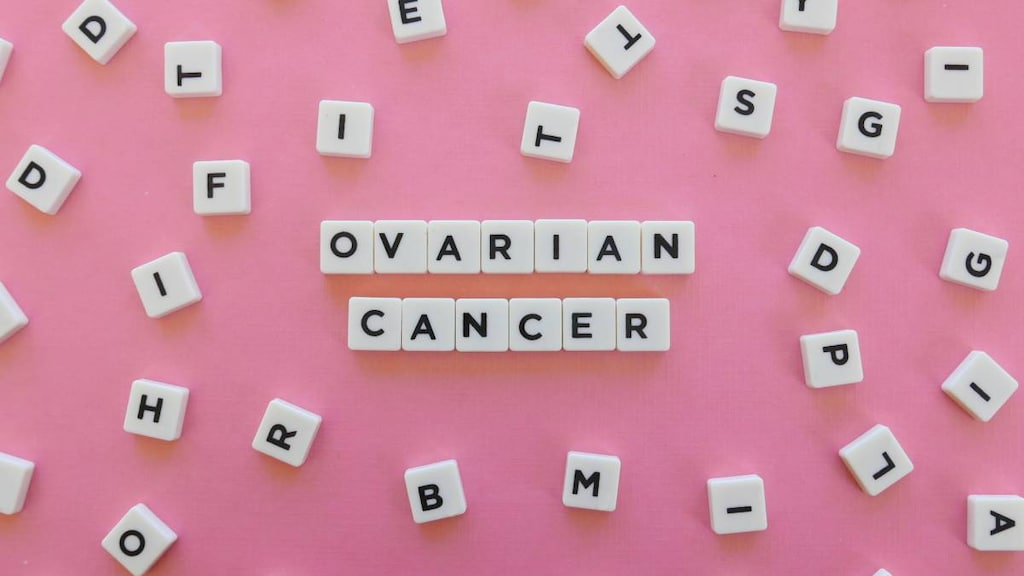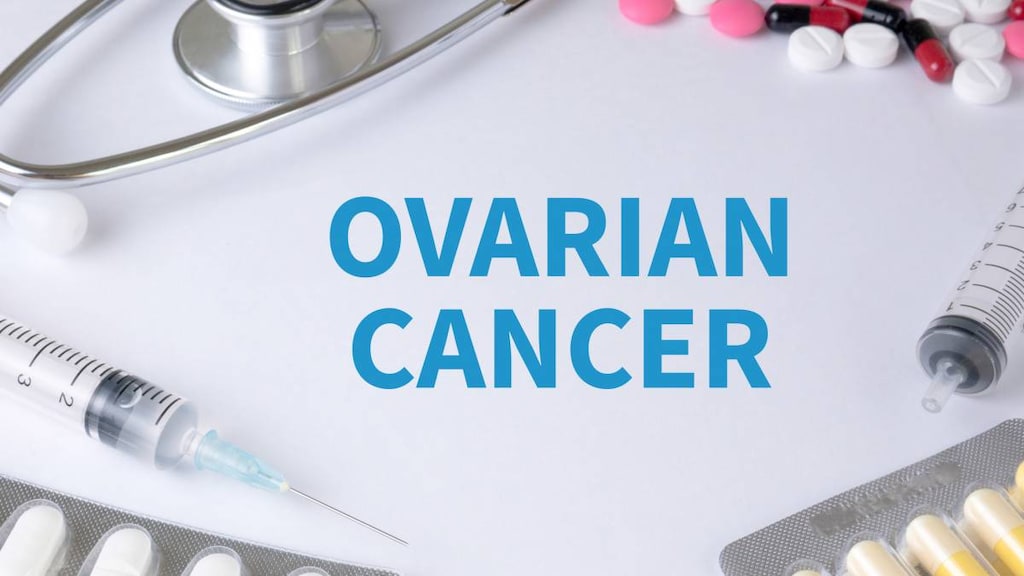Understanding Ovarian Cysts

There can be confusion about the difference between ovarian cysts and cancer. Many wonder if ovarian cysts can be cancerous. Or, can ovarian cysts cause cancer?
Cysts can form most anywhere in your body, but an ovarian cyst is a fluid-filled sac that develops in the ovaries. Often, these sacs develop during a woman’s monthly ovulation cycle — that time of the month when the ovary releases an egg and it travels down the fallopian tubes and into the uterus. While the cysts are often harmless, it’s good to be aware if you have them. However, it can be difficult to know if you have ovarian cysts because there are often no symptoms.
That's often the case with ovarian cancer, too. A lack of symptoms early on means that ovarian cancer is frequently not found until it has spread to other parts of the body. Cancer is a disease in which cells grow out of control in your body, and ovarian cancer is cancer that starts in the ovaries or fallopian tubes but, untreated, may spread (metastasize). Once that occurs, ovarian cancer becomes more difficult to treat.
While most cysts are benign — meaning they're non-cancerous — sometimes cancer can cause a cyst. An ultrasound or CT scan will show if a cyst has solid components, which increases the likelihood of it being cancerous. Then, a biopsy procedure — removing tissue and examining it in a lab — would clarify whether it's cancerous.
Types of ovarian cysts
Most ovarian cysts, also called functional cysts, form during the menstrual cycle. They are usually benign. The two most common types are:
- Follicle cysts. When a woman has her monthly period, one of her ovaries releases an egg. The egg has developed in a small sac called a follicle, and when the egg is mature the sac opens and releases the egg. However, in follicle cysts, the sac does not break open, so the egg stays inside. The follicle continues to grow and forms into a cyst. Most of these cysts go away in less than three months, and most women aren’t even aware they had them.
- Corpus luteum cysts. In this type of cyst, the follicle does break open and release the egg like it’s supposed to, but it’s the next stage that goes awry. After releasing the egg, the empty follicle sac should shrink into a small mass of cells, known as the corpus luteum. However, in corpus luteum cysts, the follicle sac does not shrink. Instead, the sac seals back up after releasing the egg and fluid builds up inside. Most corpus luteum cysts go away naturally. However, some can cause pain and bleeding or can twist the ovary. They can grow up to 4 inches in width. Medicine taken to increase ovulation may increase the risk for these cysts, according to the U.S. Office on Women's Health.
Though these are the most common types, a variety of other ovarian cysts are less common but still prevalent. They include endometriomas, which are caused by endometriosis; dermoids, which are present from birth; and cystadenomas, water-filled cysts that may become big. Also, some women have polycystic ovary syndrome (PCOS), a condition in which their ovaries make small cysts and which can lead to fertility problems.
Cancerous cysts are actually quite rare. But, all ovarian cysts should be checked by your doctor to make sure they are not causing any issues, such as problems with fertility, and to verify that they are benign.
How common are cysts?
Women with regular menstrual cycles often have ovarian cysts. In fact, it’s not uncommon for women to make a follicle or corpus luteum cyst in each monthly cycle. Most women don’t know they have a cyst as these cysts produce few to no symptoms.
Premenopausal women have an 8 percent chance of developing a cyst large enough to be treated. Women who are post-menopausal have a lower risk for ovarian cysts — but, those who do develop them have a higher risk for ovarian cancer.
What causes cysts?
You can’t prevent a cyst from developing. Common reasons for cyst formations include:
- Pelvic infections: If you have a severe infection in your pelvis, the infection can spread to your fallopian tubes and ovaries and can result in cysts.
- Endometriosis: Women who have endometriosis — in which tissue starts growing outside the uterus and may attach to an ovary — may experience cysts that can be painful during menstruation and sex.
- Pregnancy: Before the placenta forms, an ovarian cyst may develop early in the pregnancy to help support the pregnancy. However, if the cyst stays on the ovary for the duration of the pregnancy, it may need to be surgically removed.
- Hormones: Some cysts are caused by hormonal abnormalities or by medication that helps a woman ovulate. These cysts often don't need treatment as they generally go away on their own.
Diagnosis and beyond
Because many cysts present few symptoms, women often do not know they have one. However, if you feel bloated, feel pressure in your pelvic area or have abnormal bleeding, make an appointment with your doctor. And while most cysts are small and harmless, a cyst can rupture and cause pain. If you have a cyst that is twisting an ovary, you may feel nauseous.
If a cyst is suspected, your doctor may do a pelvic exam to check for swelling on the ovary. If a cyst is found, the initial treatment may be to simply monitor it because most cysts are harmless and often go away on their own. Or, your doctor may order various tests, such as an ultrasound that will reveal the shape, size and location of the cyst and clarify whether the cyst is fluid-filled or solid. The doctor might also test whether your hormone levels are normal and whether you are pregnant. In addition, a blood test may be given to women who are post-menopausal to measure the amount of cancer-antigen 125 (CA 125) in your blood because the amount of CA 125 is higher with ovarian cancer. However, in women who are premenopausal, there are diseases that can cause a high level of CA 125 that might not be cancer.
The risk for ovarian cancer increases in older women, so women who are past menopause and have ovarian cysts have a higher risk for ovarian cancer. However, many doctors don’t suggest screening for ovarian cancer in women of average risk for the disease because testing can lead to a false-positive — a result indicating that cancer is present when it is not.
Article references
- American Cancer Society: What is Ovarian Cancer? https://www.cancer.org/cancer/ovarian-cancer/about/what-is-ovarian-cancer.html
- U.S. Department of Health & Human Services, Office on Women’s Health: Ovarian cysts https://www.womenshealth.gov/a-z-topics/ovarian-cysts
- Mayo Clinic: Tumor vs. cyst: What's the difference? https://www.mayoclinic.org/diseases-conditions/cancer/expert-answers/tumor/faq-20057829
- Mayo Clinic: Ovarian Cancer https://www.mayoclinic.org/diseases-conditions/ovarian-cancer/symptoms-causes/syc-20375941




